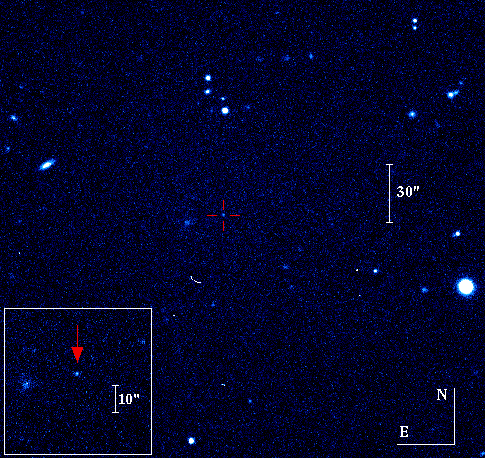The golden year of GRBs@TNG: the intriguing case of GRB 090426
After the follow-up observations of GRB 090423 (the farthest object ever observed by human beings), TNG plays a fundamental role in the study of another important gamma-ray burst: GRB 090426. This is another results obtained by the CIBO (Consorzio Italiano Burst Ottici) collaboration.
With observed and rest-frame durations of <2 s and <0.5 s, respectively, this object is classified as a short GRB. Observations performed with DOLoRes@TNG about 0.4 days after the burst clearly showed the optical afterglow in bands B, V, R and I. More important, a medium-resolution spectrum taken with the same instrument unveiled the redshift of the object: 2.61 +/- 0.1. This value, together with its duration of ~0.3 seconds, makes of this GRB the farthest short GRB ever discovered!
Nevertheless, the properties of GRB 090426 are even more intriguing. In fact, despite of its short duration, the spectral and energetic characteristics of this GRB are more similar to those of long bursts. This makes of it a quite unique source.
With its peculiar properties this GRB poses a serious puzzle at the moment of identifying its progenitor. The collection of observational data taken at different wavelength bands (among them, e.g., the position of the afterglow within the host galaxy, a high SFR system detected both in TNG and LBT data) makes not straightforward to discriminate between the two most popular models of GRB formation: the coalescence of two compact objects bound in a binary system as expected for short GRBs and the collapse of massive stars as in in the case of long GRBs.
(L. A. Antonelli et al., "GRB 090426: the farthest short gamma-ray burst?", 2009, Astronomy and Astrophysics, vol. 507, pages L45-L48)

Fig.1: V-band image of GRB 090426 taken with DOLoRes@TNG.

